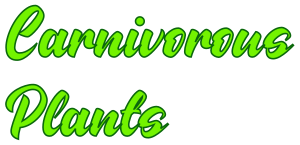What Do Carnivorous Plants Eat?
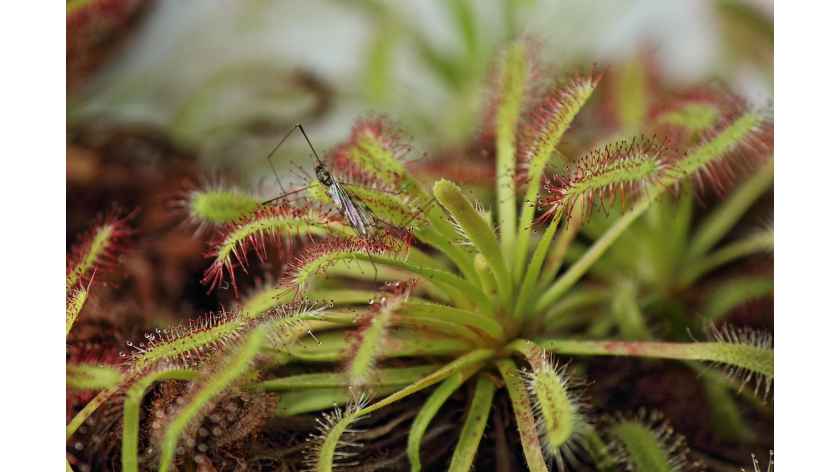
Comprehensive Guide Carnivorous plants are unique and fascinating specimens that have evolved over time to survive in environments with poor soil conditions. Unlike most plants, they have developed the ability to obtain nutrients through capturing and digesting insects and other small organisms. But what exactly do carnivorous plants eat? In this comprehensive guide, we will delve into the different types of carnivorous plants, their various mechanisms for capturing prey, and the types of prey they typically consume.
Table of Contents
- Introduction
- Types of Carnivorous Plants
- Venus Flytraps
- Pitcher Plants
- Sundews
- Bladderworts
- Waterwheel Plants
- Butterworts
- Mechanisms for Capturing Prey
- Active Traps
- Passive Traps
- Prey of Carnivorous Plants
- Insects
- Spiders
- Mites
- Snails and Slugs
- Small Vertebrates
- How Carnivorous Plants Digest Their Prey
- The Importance of Carnivorous Plants in Their Ecosystems
- Conclusion
- FAQs
Types of Carnivorous Plants
There are over 600 species of carnivorous plants that have been identified, each with their own unique adaptations for capturing and digesting prey. Here are six of the most well-known types of carnivorous plants:
Venus Flytraps
Venus Flytraps (Dionaea muscipula) are perhaps the most iconic carnivorous plants. They have a unique trap that consists of two modified leaves that snap shut when triggered by tiny hairs on the inner surface of the trap. Once an insect or other small prey is caught, the trap closes tightly, and digestive enzymes are secreted to break down the prey.
Pitcher Plants
Pitcher Plants (Sarracenia) are another well-known type of carnivorous plant. They have a long, tube-shaped leaf that is filled with digestive fluid. Insects are attracted to the nectar secreted by the plant, and as they crawl down into the tube, they become trapped and are unable to escape.
Sundews
Sundews (Drosera) have sticky, glandular hairs on their leaves that trap and digest insects. The hairs secrete a sticky substance that glimmers in the sunlight, attracting prey to land on the leaves. Once an insect is caught, the sundew's leaves curl around the prey, and digestive enzymes are secreted to break it down.
Bladderworts
Bladderworts (Utricularia) are aquatic carnivorous plants that have tiny bladders on their leaves. These bladders create a vacuum that sucks in small organisms such as water fleas and mosquito larvae. Once the prey is inside the bladder, it is digested by enzymes secreted by the plant.
Waterwheel Plants
Waterwheel Plants (Aldrovanda) are free-floating carnivorous plants that use small, wheel-like traps to catch prey. The traps are covered in tiny hairs that sense the movement of prey in the water. Once the prey is detected, the trap snaps shut, and the prey is digested.
Butterworts
Butterworts (Pinguicula) have sticky leaves that trap insects. Once an insect lands on the leaf, it becomes stuck, and the leaf curls around the prey to secrete digestive enzymes.
Mechanisms for Capturing Prey
Carnivorous plants have evolved various mechanisms for capturing prey, which can be broadly categorised into two types: active traps and passive traps.
Active Traps
Active traps are carnivorous plants that have a mechanism for actively capturing prey. Venus Flytraps are a classic example of active traps. They have specialised leaves that close rapidly when triggered by prey, trapping them inside. Waterwheel Plants also have an active trap mechanism, using tiny hairs to detect movement and quickly close the trap.
Passive Traps
Passive traps are carnivorous plants that rely on their shape or surface characteristics to trap prey passively. Pitcher Plants and Sundews are examples of passive traps. Pitcher Plants have a tube-shaped leaf filled with digestive fluid, which attracts prey. The insects are lured in by the plant's nectar and become trapped inside, unable to escape. Sundews have sticky, glandular hairs on their leaves that trap insects, and the leaves curl around the prey to digest it.
Prey of Carnivorous Plants
Carnivorous plants primarily consume small insects and invertebrates, but some have been known to consume small vertebrates like frogs and lizards. Here are some common types of prey consumed by carnivorous plants:
Insects
Insects are the most common prey for carnivorous plants. Venus Flytraps and Sundews are especially efficient at trapping and digesting insects.
Spiders
Some carnivorous plants, like Pitcher Plants, have been known to capture and digest small spiders.
Mites
Sundews and Pitcher Plants have been observed trapping and digesting mites.
Snails and Slugs
Some carnivorous plants, like Pitcher Plants, have been known to capture and digest small snails and slugs.
Small Vertebrates
While it is rare, some carnivorous plants have been known to capture and digest small vertebrates like frogs and lizards. This is more common in larger carnivorous plants like Nepenthes, which are found in tropical regions.
How Carnivorous Plants Digest Their Prey
Carnivorous plants have evolved a specialised mechanism for digesting their prey. They secrete digestive enzymes that break down the proteins and other nutrients in the prey's body, which are then absorbed by the plant. Once digestion is complete, the plant can absorb the nutrients and use them to grow and reproduce.
The Importance of Carnivorous Plants in Their Ecosystems
Carnivorous plants play an important role in their ecosystems. They are often found in habitats with poor soil conditions, where they are able to supplement their nutrient intake by consuming insects and other small organisms. In doing so, they help maintain a balance in their ecosystems and provide food for other animals.
Conclusion
Carnivorous plants have evolved fascinating and unique adaptations for capturing and digesting prey. They primarily consume small insects and invertebrates, but some have been known to consume small vertebrates like frogs and lizards. Carnivorous plants play an important role in their ecosystems, providing food for other animals and maintaining a balance in their habitats.
FAQs
- Are all carnivorous plants dangerous to humans?
- No, most carnivorous plants are harmless to humans.
- Can carnivorous plants survive without consuming insects?
- While carnivorous plants have evolved to capture and digest insects, they can survive without consuming them. They are able to obtain nutrients from the soil, but may not grow as well as they would with a steady supply of insects.
- Do carnivorous plants only eat live prey?
- No, some carnivorous plants have been known to consume dead insects and other organic matter. This is because the digestive enzymes secreted by carnivorous plants are able to break down both living and dead matter.
- How do carnivorous plants avoid digesting themselves?
- Carnivorous plants have developed a mechanism to prevent self-digestion. They secrete digestive enzymes only in response to the presence of prey, and the enzymes are contained within specialised digestive glands that prevent them from coming into contact with the plant's own tissues.
- Can carnivorous plants be grown indoors?
- Yes, many carnivorous plants can be grown indoors as long as they are provided with the proper growing conditions, such as a humid environment and ample light. However, it is important to note that carnivorous plants require specific care and may not be suitable for all indoor environments.
Carnivorous Pitcher Plants May Lure Insects with Smell

Types of Carnivorous Plants
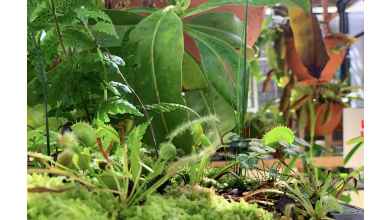
Are There Any Carnivorous Plants in the UK?
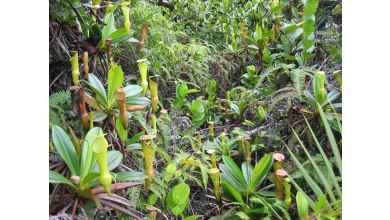
How to Grow Venus Fly Trap from Seeds

Darlingtonia Californica Care Guide
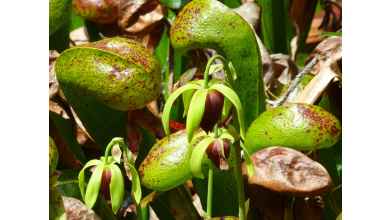
Cephalotus Care Guide

